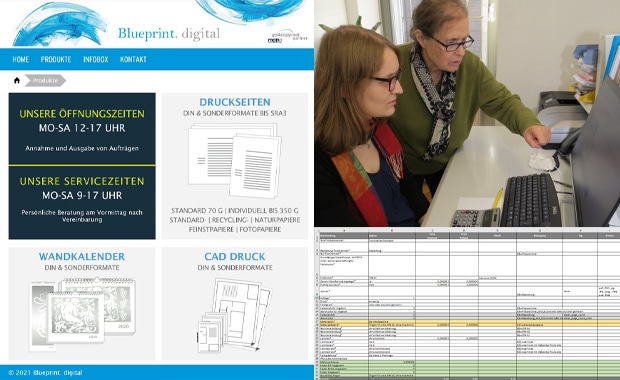Within the current rapidly changing digital landscape, smaller enterprises are constantly on the lookout for creative solutions to remain competitive and meet customer needs. An example of a transformative solution is Web-to-Print software, a revolutionary tool that enables print shops and businesses alike to simplify their operations and enhance customer satisfaction. As the print industry changes, comprehending how Web-to-Print solutions work becomes crucial for anyone looking to leverage the power of e-commerce and automation.
Web-to-Print software not only simplifies the ordering system but also enables customization on a level previously unimaginable. From automated order management to tailored print offerings, this tool allows companies to enhance their workflow efficiency significantly. As we dig deeper into the advantages and aspects of Web-to-Print systems, we will investigate how it is revolutionizing the print industry and what smaller enterprises need to know to successfully implement this cutting-edge solution into their business practices.
Grasping Online Print Software
Web-to-print software is a digital solution that optimizes the printing process by allowing businesses and customers to purchase print products online. This technology enables users to customize and submit print orders directly through a web-based interface, cutting out the need for traditional face-to-face interactions. By utilizing this software, businesses can improve efficiency, minimize errors, and elevate customer experience in the printing industry.
One of the key features of web-to-print software is its functionality to offer tailoring options. Users can personalize products by inserting images, adjusting text, and choosing various design components straight on the platform. This tailoring is not only beneficial for private customers but also empowers print shops to cater to diverse client needs, which then expanding their service offerings and attracting a larger customer base.
In addition, web-to-print solutions improve better order management and workflow integration. With streamlined https://notes.io/wXcxv for order intake, production tracking, and delivery management, businesses can refine their operations. This optimized workflow results in faster turnaround times, improved accuracy, and finally, greater satisfaction for both print service providers and their clients. As such, adopting web-to-print software places businesses to thrive in an ever more competitive market.
Benefits and Features of Web-to-Print Solutions
Online printing services offer numerous benefits for local companies, making them a critical tool in the current business environment. https://kincaid-hay-3.mdwrite.net/making-the-shift-transitioning-to-web-2-print-software of the key advantages is the enhanced efficiency they bring to the print workflow. By streamlining various tasks, from order reception to job management, these solutions significantly reduce the time and effort required to complete print orders. This allows businesses to respond quickly to customer demands, streamline workflows, and maximize productivity while minimizing the risk of mistakes that often occur with manual processes.
An additional important aspect of web-to-print software is its ability to enable customization and personalization. Customers now expect personalized experiences, and web-to-print services enable businesses to offer tailored products with ease. With the option for clients to design their print materials or select from pre-designed templates, businesses can cater to unique preferences, enhancing client happiness and loyalty. This capability not only differentiates a business from competitors but also opens up new revenue streams through the sale of customized products.
Lastly, web-to-print systems support better order management through integrated systems. This capability allows print shops to track orders in real time, from first questions to final delivery. By utilizing features such as automated notifications, client interfaces, and detailed analytics, businesses can ensure transparency with their clients and improve communication throughout the workflow. This level of organization helps prevent miscommunication and guarantees a smooth experience, promoting return customers and establishing lasting customer relationships.
A Vision of Web to Print Technology
While we gaze forward, the landscape of web-to-print technology is poised for significant changes fueled by advancements in artificial intelligence and machine learning. These emerging technologies are poised to enhance personalization options, permitting businesses to examine consumer data more efficiently and provide tailored print solutions that meet individual customer needs. This shift will certainly lead to an rise in demand for customized products, making it vital for print shops to embrace flexible web-to-print solutions that can address these evolving preferences.

In addition to improved personalization capabilities, sustainability will play a key role in the future of web-to-print technology. Since customers become more environmentally conscious, print providers will be pressured to implement greener practices in their operations. Web-to-print solutions that focus on waste reduction, efficient resource utilization, and eco-friendly materials will not only track a broader market but also meet compliance demands. This focus to sustainability can help businesses stand out and build loyalty among eco-minded consumers.
Furthermore, integration with e-commerce platforms will stay a crucial aspect of web-to-print solutions. As online shopping becomes widespread, the effortless integration of print services with digital marketplaces will be vital for ensuring effective order management and customer satisfaction. The ability to facilitate print orders from e-commerce sites and provide real-time updates will enhance the complete customer experience, paving the way for print shops to thrive in an increasingly competitive environment. Adopting these technological advancements and trends will be necessary for print businesses striving for long-term success in the era of digital transformation.
